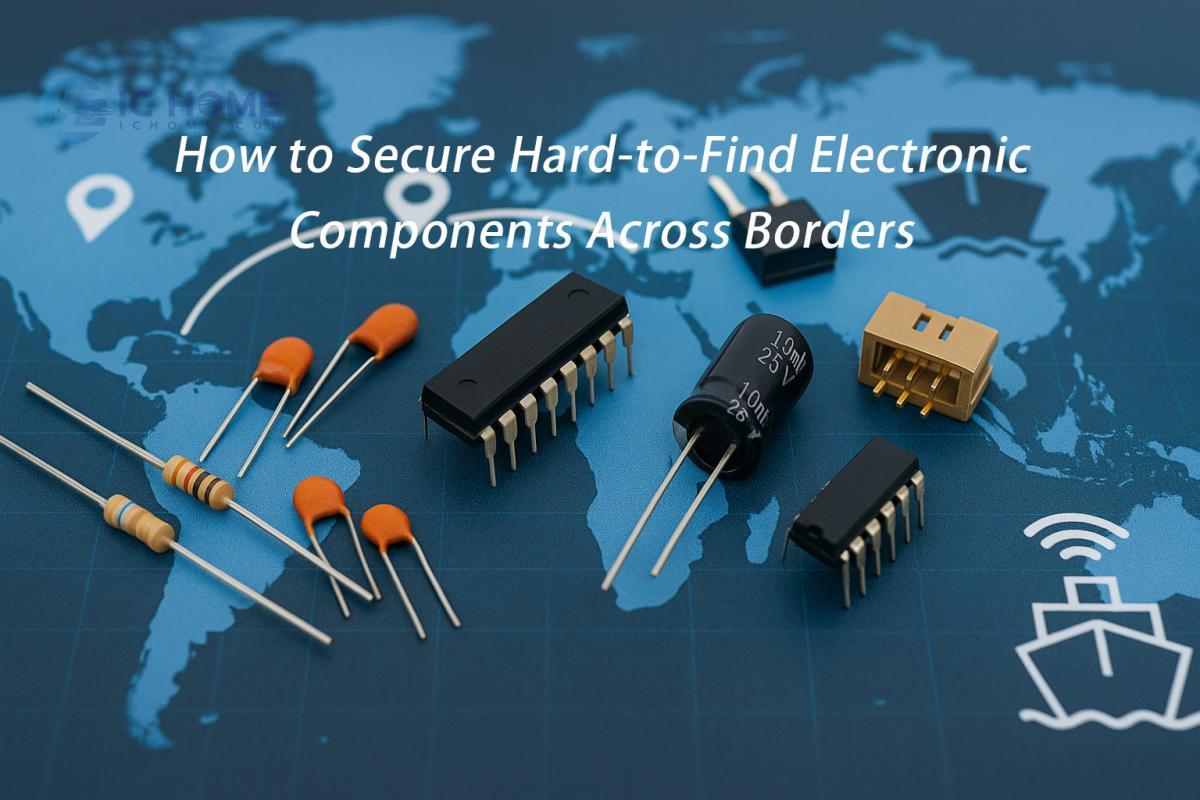Navigating Global Sourcing: How to Secure Hard-to-Find Electronic Components Across Borders
In today’s increasingly complex electronics supply chain, procurement professionals often encounter a critical challenge: sourcing hard-to-find or obsolete components. These parts may no longer be produced in large volumes, may be nearing End-of-Life (EOL), or are in short supply due to geopolitical issues or sudden market demand spikes.
When local suppliers fall short, the search often expands beyond borders. Global sourcing becomes not just an option, but a necessity. However, cross-border procurement introduces a new layer of complexity involving logistics, tariffs, legal compliance, and supplier reliability. For procurement teams to navigate this landscape effectively, a strategic approach is crucial.

The Necessity of Global Sourcing in Today’s Market
The global electronics market is heavily interconnected. A component unavailable in one country may still be in stock in another—whether in Asia, North America, or Eastern Europe. Tapping into these international markets can offer several advantages:
-
Access to rare, legacy, or end-of-life components
-
Better pricing through competitive overseas markets
-
Potential to build long-term relationships with niche suppliers
But global sourcing is not without its pitfalls.
Key Challenges in Cross-Border Procurement
-
Logistics and Lead Time Management
Shipping components across continents involves more than selecting the fastest courier. Factors like customs clearance, international shipping regulations, and geopolitical issues can all affect lead times. Procurement teams must coordinate with logistics providers to ensure safe, compliant, and timely delivery. Delays can quickly cascade into production halts and financial losses.
-
Tariffs and Import Duties
Each country has its own tariff structures, and trade policies are subject to change. Tariffs can significantly impact the total cost of a component, especially if not accounted for in initial budgeting. Some countries may also impose additional import duties on specific electronic goods, making cost forecasting difficult.
Working with customs brokers or choosing suppliers familiar with export compliance can help mitigate these risks.
-
Compliance with Local and International Regulations
Electronic components, especially those used in critical applications like aerospace, medical devices, or automotive electronics, must adhere to various compliance standards. These may include:
-
RoHS (Restriction of Hazardous Substances)
-
REACH (Registration, Evaluation, Authorisation and Restriction of Chemicals)
-
Country-specific safety and environmental regulations
Failing to meet compliance standards not only risks fines but could also lead to rejected shipments or product recalls.
-
Supplier Verification and Trustworthiness
When dealing with overseas vendors—especially lesser-known or unverified ones—there’s an increased risk of counterfeit or substandard parts entering the supply chain. This is why sourcing through professional distributors or using third-party verification services is often a safer route.
Trusted distributors usually offer component testing, traceability documentation, and secure payment solutions that protect buyers from fraud and ensure authenticity.
Strategic Solutions for Smarter Global Sourcing
To minimize risk and maximize efficiency when sourcing globally, procurement professionals should:
-
Partner with specialized distributors experienced in cross-border transactions. These intermediaries often handle logistics, compliance, and payment processing on the buyer’s behalf.
-
Use digital procurement platforms that offer verified supplier databases, real-time inventory availability, and integrated compliance checks.
-
Establish buffer stock and flexible timelines to account for international lead time variability.
-
Stay informed on changing trade policies and tariff regimes, particularly in key sourcing regions like China, the EU, or Southeast Asia.
-
Invest in supplier relationships, treating them as long-term partners rather than transactional sources.
Conclusion
Sourcing hard-to-find components globally is a strategic necessity in modern electronics procurement. But doing so successfully requires more than just finding the right part—it demands an understanding of logistics, compliance, and supplier trust. By taking a proactive and informed approach, procurement professionals can turn global sourcing from a high-risk task into a powerful competitive advantage.




